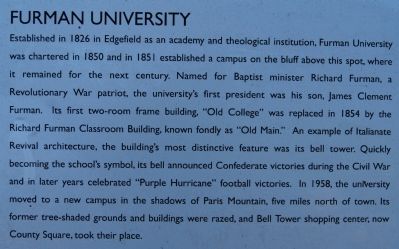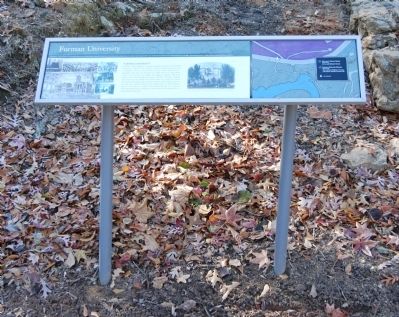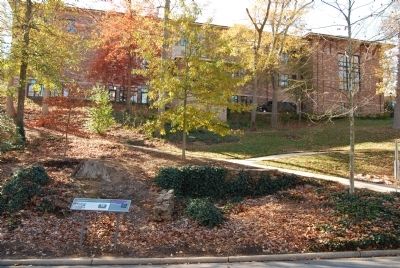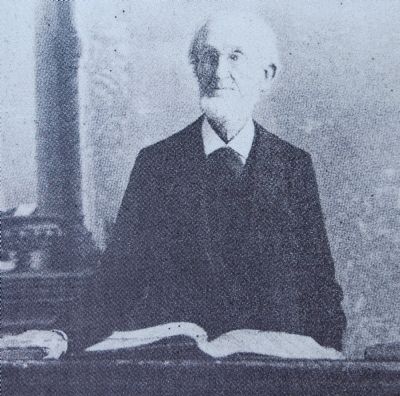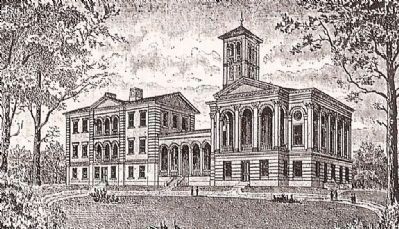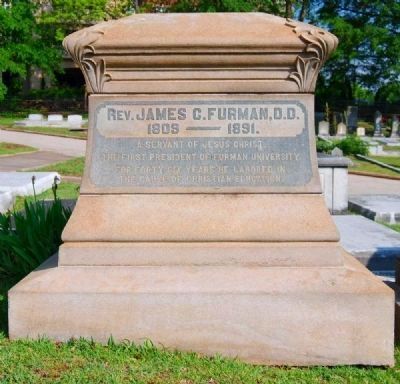Greenville in Greenville County, South Carolina — The American South (South Atlantic)
Furman University
Topics. This historical marker is listed in these topic lists: Churches & Religion • Education • Sports • War, US Civil • War, US Revolutionary. A significant historical year for this entry is 1826.
Location. 34° 50.617′ N, 82° 24.067′ W. Marker is in Greenville, South Carolina , in Greenville County. Marker is on Furman College Way, on the right when traveling east. Touch for map. Marker is in this post office area: Greenville SC 29605, United States of America. Touch for directions.
Other nearby markers. At least 10 other markers are within walking distance of this marker. A different marker also named Furman University (within shouting distance of this marker); The Cherokees (within shouting distance of this marker); Old Mill Ruins (within shouting distance of this marker); Reedy River Falls (within shouting distance of this marker); Restoration and Development (within shouting distance of this marker); Mill Village (about 300 feet away, measured in a direct line); a different marker also named Furman University (about 300 feet away); Vardry Mill (about 300 feet away); Liberty Bridge (about 300 feet away); River Lodge (about 300 feet away). Touch for a list and map of all markers in Greenville.
Related markers. Click here for a list of markers that are related to this marker. Other markers documenting Furman University's history.
Also see . . .
1. Furman University. Official website of Furman University. (Submitted on December 20, 2008, by Brian Scott of Anderson, South Carolina.)
2. Furman University. Furman University is a private, coeducational, non-sectarian university in Greenville, South Carolina, United States. (Submitted on May 17, 2009, by Brian Scott of Anderson, South Carolina.)
Additional commentary.
1. About James Clement Furman
Born in Charleston, James Furman’s legacy is the service and devotion he gave to his namesake university, which is actually named for his father, Dr. Richard Furman, a Baptist minister and denominational leader. The junior Furman began his tenure as a member of the Furman University faculty while it was still located north of Columbia in Fairfield. He would, working with members of the school’s board of trustees, campaign over the next six years to persuade the state Baptist Convention to move the school to Greenville, where it eventually opened in 1851 in McBee Hall. He would go on to become chairman of the faculty and later president of the university.
Furman, an ardent states’ rights supporter, was heavily involved in politics, as well. In 1860, he secured an appointment as one of the Greenville delegates to attend the Secession Convention, a meeting that would eventually lead South Carolina to become the first Southern state to secede from the Union. On December 20, 1860, Furman was one of the signers of the Ordinance of Secession. (Source: G: The Magazine of Greenville, Jan/Feb 09 pg 70.)
— Submitted May 17, 2009, by Brian Scott of Anderson, South Carolina.
2. James Clement Furman: History in Brief
At a Glance James Furman became an influential political figure in the community and a leader at Furman University, a school that his father, Dr. Richard Furman, worked to found.
Claim to Fame Furman is best known for his efforts to have Furman University moved from Fairfield, South Carolina, to Greenville in 1851, where it opened in McBee Hall on the corner of Main Street and McBee Avenue. He was chairman of the faculty before later becoming president.
Did You Know? Furman University closed during the Civil War, so Furman became president of the Greenville Women’s College instead. Initial efforts to reopen the school after the war’s conclusion were unsuccessful, but Furman was quoted as saying, “I have resolved, if the university should go down, to sink with it.”
An Impressive Eulogy At an 1870 commemoration of the death of Confederate General Robert E. Lee, Furman was a featured speaker. (Source: G: The Magazine of Greenville, Jan/Feb 09, pg 70.)
— Submitted May 17, 2009, by Brian Scott of Anderson, South Carolina.
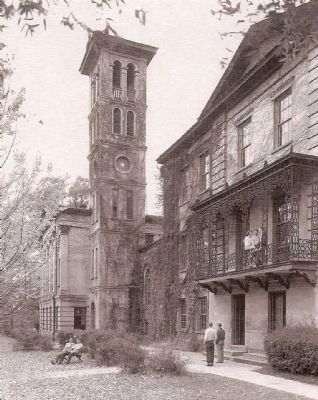
Special Collections, South Carolina Library, USC Columbia
5. Furman University (1854)
Furman Campus was designed by Edward C. Jones of Charleston. The Italian-style bell tower was rung each time there was a southern victory during the Civil War. The campus was demolished in 1961 but the bell tower was recreated on Furman's current campus. It now chimes each time there is a Furman athletic victory.
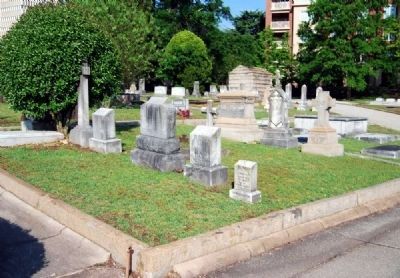
Photographed By Brian Scott, May 9, 2009
7. Furman University Plot -
Springwood Cemetery, Greenville SC
Springwood Cemetery, Greenville SC
Furman purchased 84 plots in 1868. Notables buried in the plot are Charles Judson (first professor hired by Furman University when the school moved to Greenville and the 12th President of the Greenville Female College), Mary Camilla Judson (the principal of the female college), James Clement Furman (first President of Furman University), James C. Furman II, M.D., and later Furman presidents Edwin Poteat and Dr. W.J. McGlothlin.
Credits. This page was last revised on December 13, 2019. It was originally submitted on December 20, 2008, by Brian Scott of Anderson, South Carolina. This page has been viewed 2,430 times since then and 26 times this year. Photos: 1, 2, 3, 4. submitted on December 20, 2008, by Brian Scott of Anderson, South Carolina. 5, 6. submitted on April 13, 2009, by Brian Scott of Anderson, South Carolina. 7, 8. submitted on May 17, 2009, by Brian Scott of Anderson, South Carolina.
